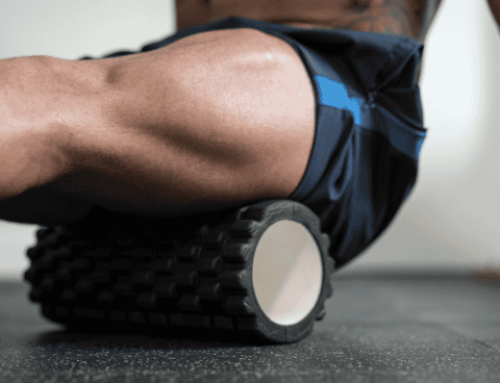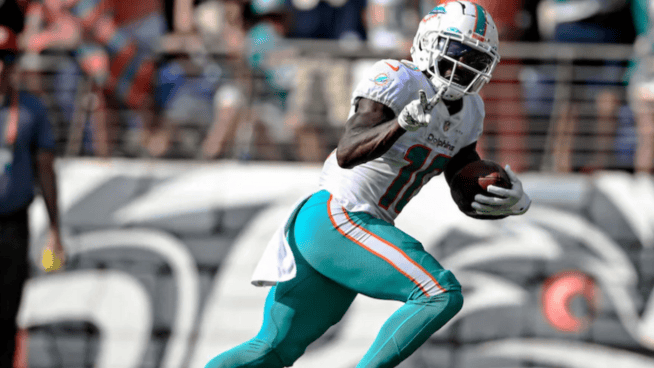Why Coaches Should Perform a Needs Analysis to Create a Perfect Training Program
A needs analysis is an important tool for a strength and conditioning program. Using strength and conditioning to meet the needs of a sport can be a difficult task. This article outlines a series of steps that you can take to accomplish this. We begin by looking at the sport and position to determine what it needs. Once that is done, it’s time to look at the athletes.
Looking at the Sport and Position
Every sport is different, and usually, every position within the sport has different needs. The following are things to consider when analyzing a sport to design a strength and conditioning program:
- Muscles and movements
- Energy systems
- Strength and power requirements
- Injury patterns
Muscles and Movements
Basically, all sports use some combination of every muscle in the body. So this one is easy. At some point everything has to be worked. But, other things must be considered here:
- Is the sport played lying down? Sitting? Standing?
- One leg in contact with the ground or both?
- Do players use one side of the body to lever (like in kicking, throwing, or many track & field jumps)?
- Do some positions in the sport need to be strengthened? E.g., a baseball-ready position, a catcher’s stance, or a defensive slide in basketball.
All these things can change the exercises selected to address the sport’s needs.
Energy Systems
We all have three energy systems. All sports use all three systems to an extent, but they may predominantly use one or two, and this needs to be kept in mind because it determines work to rest ratios, conditioning programs, and even set and rep schemes. The energy systems are:
- Phosphagen: short term, high intensity. Basically 6-10 seconds of activity. A vertical jump, running the 40, a maximal lift.
- Glycolytic: moderate term, moderate intensity. Up to 2-3 minutes of activity. Running the 400, performing Sit-Ups for two minutes, repping out Push-Ups until failure.
- Aerobic: unlimited if the fuel is present and if the intensity stays low enough. This is the system we use for most everyday activities.
All sports use aspects of each, but a particular sport may predominantly use one or two. For example, a 100-meter sprint predominantly uses phosphagen with some glycolytic at the end of the race. Though many sports seem continuous in nature, they could have a start-and-stop nature, meaning they more on one energy system than others.
Strength and Power Requirements
Until there is a sport that involves competing to see who can move the slowest, all sports require some strength and power. This is true whether the sport involves hitting a 300-pound defensive lineman in football, running a sprint, or even running a marathon. Strength and power allow you to exert force against the ground and other surfaces, allowing you to move quickly and propel objects.
The trick is determining how much is needed. A marathon runner requires less than a sprinter. A sprinter requires less than a football player.
Injury Patterns
Some sports and positions are more susceptible to specific injuries than others. Sprinters and soccer players hurt their hamstrings, running backs and hockey players hurt their groins, throwers hurt their elbows and shoulders. This aspect has to be carefully researched and accounted for in a strength and conditioning program.
Injury susceptibility is often dealt with by avoiding certain exercises—or example, the bench press for baseball pitchers. It can also be done by prescribing exercises that help prevent certain injuries—for example ankle strengthening exercises for basketball players, hamstring exercises for sprinters.
Looking at the Athletes
Once you have a picture of the sport and position, take stock of where your athletes are. Consider the following:
- Training age
- Injury status
- Time of year
Training Age
This is incredibly important and often overlooked. Your training age gives a coach an idea of how much organized training you’ve done, whether you have a training work ethic, and what exercises you can be expected to have mastered. As you can imagine, it has a major impact on program design. For example, I might have an athlete performing Power Cleans for several years before moving to Split Cleans or One-Legged Cleans. Prescribing advanced workouts before an athlete is ready is a recipe for disaster.
Injury Status
Several considerations come into play here. First, is the athlete currently healthy? If not, can we safely train around or through it? Regardless, how do we alter our program to account for the injury? Second, does the athlete have a history of specific injuries? For example, we may want to avoid heavy Squats for an athlete with a history of lower back problems. Finally, is the athlete prone to becoming sick or injured at certain points during the year? This might indicate a need to back off during these periods, look at sleep patterns, or look at nutrition.
Time of Year
Time of year has a big impact on strength and conditioning programs. An athlete who is in-season is traveling, competing, practicing, studying the sport and attempting to fit in other parts of his or her life. This results in less time for training, which the training program design must account for. On the other hand, during the off-season, more time is available, since little or no travel or competitions are going on.
Designing strength and conditioning programs to meet the needs of specific sports can be challenging. However, a systematic approach can make it less time-intensive and ensure that you don’t miss something important.
RECOMMENDED FOR YOU
MOST POPULAR
Why Coaches Should Perform a Needs Analysis to Create a Perfect Training Program
A needs analysis is an important tool for a strength and conditioning program. Using strength and conditioning to meet the needs of a sport can be a difficult task. This article outlines a series of steps that you can take to accomplish this. We begin by looking at the sport and position to determine what it needs. Once that is done, it’s time to look at the athletes.
Looking at the Sport and Position
Every sport is different, and usually, every position within the sport has different needs. The following are things to consider when analyzing a sport to design a strength and conditioning program:
- Muscles and movements
- Energy systems
- Strength and power requirements
- Injury patterns
Muscles and Movements
Basically, all sports use some combination of every muscle in the body. So this one is easy. At some point everything has to be worked. But, other things must be considered here:
- Is the sport played lying down? Sitting? Standing?
- One leg in contact with the ground or both?
- Do players use one side of the body to lever (like in kicking, throwing, or many track & field jumps)?
- Do some positions in the sport need to be strengthened? E.g., a baseball-ready position, a catcher’s stance, or a defensive slide in basketball.
All these things can change the exercises selected to address the sport’s needs.
Energy Systems
We all have three energy systems. All sports use all three systems to an extent, but they may predominantly use one or two, and this needs to be kept in mind because it determines work to rest ratios, conditioning programs, and even set and rep schemes. The energy systems are:
- Phosphagen: short term, high intensity. Basically 6-10 seconds of activity. A vertical jump, running the 40, a maximal lift.
- Glycolytic: moderate term, moderate intensity. Up to 2-3 minutes of activity. Running the 400, performing Sit-Ups for two minutes, repping out Push-Ups until failure.
- Aerobic: unlimited if the fuel is present and if the intensity stays low enough. This is the system we use for most everyday activities.
All sports use aspects of each, but a particular sport may predominantly use one or two. For example, a 100-meter sprint predominantly uses phosphagen with some glycolytic at the end of the race. Though many sports seem continuous in nature, they could have a start-and-stop nature, meaning they more on one energy system than others.
Strength and Power Requirements
Until there is a sport that involves competing to see who can move the slowest, all sports require some strength and power. This is true whether the sport involves hitting a 300-pound defensive lineman in football, running a sprint, or even running a marathon. Strength and power allow you to exert force against the ground and other surfaces, allowing you to move quickly and propel objects.
The trick is determining how much is needed. A marathon runner requires less than a sprinter. A sprinter requires less than a football player.
Injury Patterns
Some sports and positions are more susceptible to specific injuries than others. Sprinters and soccer players hurt their hamstrings, running backs and hockey players hurt their groins, throwers hurt their elbows and shoulders. This aspect has to be carefully researched and accounted for in a strength and conditioning program.
Injury susceptibility is often dealt with by avoiding certain exercises—or example, the bench press for baseball pitchers. It can also be done by prescribing exercises that help prevent certain injuries—for example ankle strengthening exercises for basketball players, hamstring exercises for sprinters.
Looking at the Athletes
Once you have a picture of the sport and position, take stock of where your athletes are. Consider the following:
- Training age
- Injury status
- Time of year
Training Age
This is incredibly important and often overlooked. Your training age gives a coach an idea of how much organized training you’ve done, whether you have a training work ethic, and what exercises you can be expected to have mastered. As you can imagine, it has a major impact on program design. For example, I might have an athlete performing Power Cleans for several years before moving to Split Cleans or One-Legged Cleans. Prescribing advanced workouts before an athlete is ready is a recipe for disaster.
Injury Status
Several considerations come into play here. First, is the athlete currently healthy? If not, can we safely train around or through it? Regardless, how do we alter our program to account for the injury? Second, does the athlete have a history of specific injuries? For example, we may want to avoid heavy Squats for an athlete with a history of lower back problems. Finally, is the athlete prone to becoming sick or injured at certain points during the year? This might indicate a need to back off during these periods, look at sleep patterns, or look at nutrition.
Time of Year
Time of year has a big impact on strength and conditioning programs. An athlete who is in-season is traveling, competing, practicing, studying the sport and attempting to fit in other parts of his or her life. This results in less time for training, which the training program design must account for. On the other hand, during the off-season, more time is available, since little or no travel or competitions are going on.
Designing strength and conditioning programs to meet the needs of specific sports can be challenging. However, a systematic approach can make it less time-intensive and ensure that you don’t miss something important.












